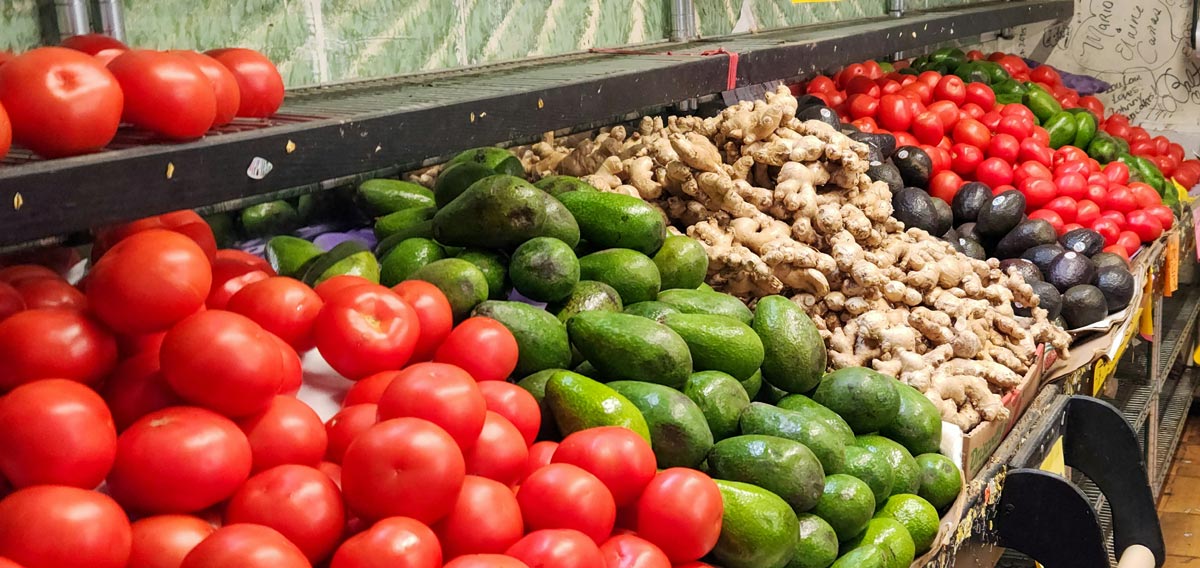By Kris Ospina, RD, LDN, CEDRD
Grocery shopping can feel like a very daunting task. There are countless products on the shelves and an overwhelming number of decisions to make around food and meal planning. According to IT Retail, most grocery stores carry over 39,500 products! So, to say grocery shopping can be intimidating, feels like an understatement.
As a dietitian, I’m often asked for advice on how to tackle a large grocery haul. It’s hard to know where to start amongst all the ever-changing nutritional advice, the rising cost of food and the thousands of food products lining up the shelves. To help make sense of the madness, I’ve compiled some tips that I hope you will find helpful when venturing out to the store.
1. Be a Step Ahead
Going grocery shopping without a menu plan is like setting sail without a compass, and you’ll be left feeling adrift. If you’re new to menu planning, start with a goal that feels manageable to you. For example, begin by choosing 2 or 3 main meals and snacks to make for the upcoming week. No need to plan out every day. Even putting a small amount of structure into your weekly menu plan is beneficial and will help you feel more organized.
2. Make a List
Once you’ve planned your meals and snacks, make a list of all the ingredients you will need. Double check your list with what you already have on hand to help reduce food costs and waste. Organize your list by food category (i.e. produce, frozen foods, dairy) to help keep it orderly and to streamline your shopping trip. Additionally, studies show that those who use a list at the grocery store tend to make healthier food choices by reducing impulse buys.
3. Shop the Perimeter First
Whole, nutrient dense foods tend to be placed along the perimeter of the store – produce section, deli counter, meat department, bakery, etc. By sticking to the perimeter for the majority of your shopping trip, you will naturally gravitate towards the least processed foods that offer the most nutrition.
4. Be Mindful of Food Labels
Reading food labels can be confusing and make you want to throw in the towel when shopping for nutritious food. Instead of trying to make sense of all the numbers, focus on the ingredient list. Look for ingredients that you recognize and trust. If the list feels too long or full of overly complicated words, it’s probably best to look for a different option. Additionally, the ingredients are listed by weight – from most to least. So, the ingredients at the beginning of the list make up most of the product. Bearing this in mind will help you make more informed decisions about food without having to decode the food label!
5. Stock up on Some Essentials
If you’re not a fan of frequent grocery store trips and want to keep your time in the store to a minimum, consider stocking up on some essentials to help make meal preparation less stressful. By keeping some of these foods on hand, whipping up last-minute meals and snacks will be easier and more convenient. Some ideas for long-lasting pantry staples include rice, pasta, oatmeal, canned tuna, canned tomatoes, beans and lentils, soups/broths. For the freezer try chicken breasts, fish filets, ground meats and frozen fruits and veggies like berries and broccoli florets.
6. Go to Meals!
Last but not least, here are a few meal ideas when you’re in need of a quick, healthy dinner but don’t have much time or energy to navigate the grocery store. These quick food pairings offer a complete and nutritious meal in a pinch without spending hours in the aisles:
- Rotisserie chicken ~ bagged salad kit ~ bakery rolls with butter
- Frozen lasagna ~ bagged salad kit ~ garlic breadsticks
- Frozen burger patties ~ hamburger buns ~ deli counter coleslaw or fruit salad… don’t forget the burger toppings

